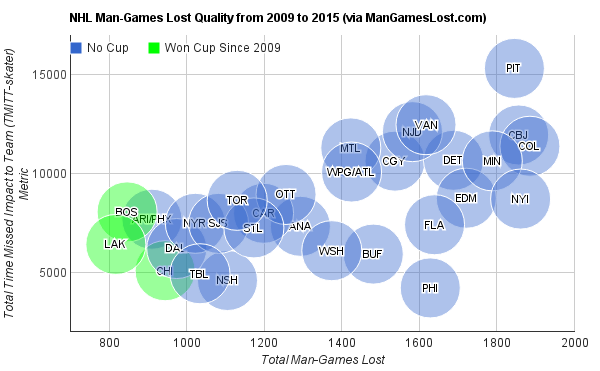When the Pittsburgh Penguins and the New York Rangers met in the second round of the 2014 Stanley Cup playoffs, the Penguins were prohibitive favorites. The Penguins had finished with 109 points, second in the Eastern Conference, and won the brand-new Metropolitan Division by 13 points.
The Penguins then dispatched the Columbus Blue Jackets in six games in the first round and built a 3-1 series lead against the Rangers. Even with all of that momentum, the Penguins’ season came to a screeching halt with three consecutive losses.
As a result, the Penguins cleaned house, firing general manager Ray Shero, the entire coaching staff, and turning over nearly the entire roster. The Penguins are expected to play just seven players that dressed for game seven at Consol Energy Center a year ago.
The Penguins 2014-15 season has been marred by injuries and long stretches of frustratingly inefficient play, and they needed a win in Game 82 to even secure a playoff berth.
For the Rangers, it’s been the exact opposite. The second year under head coach Alain Vigneault has gone about as well as the Rangers could have possibly hoped for. Their 113 points earned them the Metro Division title and the franchise’s third President’s Trophy.
In a season where scoring was down across the board in the NHL, six of the Rangers’ eight forwards that are holdover from a year ago have increased their point totals. Let’s take a look at the areas in which the Rangers have excelled:
NASH: Rick Nash has always been a very talented hockey player. A 72-point season in 2001-02 with London of the OHL led to him being taken first overall by the Columbus Blue Jackets in 2002.
The flashes of greatness remained at the NHL level, but he struggled to put everything together for long stretches of time. Even with a pair of 40-goal seasons under his belt, when he was traded from Columbus to New York in 2012, it seemed as if the Rangers were getting a fairly known quantity. In his final three seasons in Columbus, he scored 33, 32, and 30 goals and recorded 67, 66, and 59 points.
In his first season with the Rangers, he scored 21 goals in 44 games in the lockout-shortened 2012-13 season, but was back to mediocre in 2013-14, scoring just 26 goals and went scoreless in his first 14 playoff games.
The Nash of 2015 looks like a player that has finally figured out how to use his 6-foot-4, 213-pound frame to create time and space for his lightning quick release. He finished third in the league with 42 goals and sixth with a plus-29 rating. Will Nash go back to his up-and-down ways in the future? No one knows. For now, he’s a force to be reckoned with.
YOUTH: When the Rangers’ lineup was raided by the departure of a half-dozen free agents in the offseason, general manager Glen Sather didn’t go charging headlong into the bank vault looking for the cash to sign every decent player on the market.
For one thing, the Rangers, like so many teams, lack the cap space to spend wildly. For another, Sather seems to have finally learned his lesson about high-priced free agent contracts, and instead, has turned his attention to the youth.
When Benoit Pouliot, Brad Richards and Brian Boyle left for greener pastures, the Rangers slotted in three rookies – Jesper Fast, J.T. Miller and Kevin Hayes. The youngsters have more than held their ground, injecting the Rangers offense with speed, size and skill. The trio has combined for 33 goals and 82 points and is a big reason for New York’s ability to keep the offense moving forward.
HEALTH: This wonderful chart, made by Nathan Currier of NHL Man Games Lost, illustrates just how vital health is to a team’s success in the postseason.
The chart, which includes data going back to 2009, compares the total man-games lost with the average time on ice of the missing players. The Penguins are far and away in the worst shape in the upper-right corner, while Stanley Cup-winners Los Angeles, Boston and Chicago are in green in the very bottom left.
The Rangers come into the playoffs fielding practically a full lineup. Defenseman Kevin Klein is not quite ready to return from a broken leg, but he may be back by the end of the series.
GOALTENDING: In hockey, quality goaltending is a panacea. It smoothes out even the ugliest team’s warts. A question mark in goal often holds back talented squads from reaching their true potential. For the Rangers, it’s the icing on the cake.
Henrik Lundqvist has been one of the best goaltenders in the world for the last decade, but even the great ones have down years. His .920 save percentage in 2013-14 represented his worst mark since 2008-09.
In 2014-15, even an injury to “King Henrik” couldn’t slow down the Rangers. Second-year netminder Cam Talbot stepped in and was sensational, finishing with rate stats (2.21 GAA and a 0.926 save percentage) even better than Lundqvist’s. Talbot unquestionably saved the Rangers’ Presidents Trophy win and division title by going 21-9-4 in relief.
The Rangers now have two top-flight netminders that they know they can rely on, should Lundqvist falter or suffer an injury. With many teams struggling to field one quality goaltender, it gives the Blueshirts a big advantage.
Photo credit: NHLI/Getty Images
